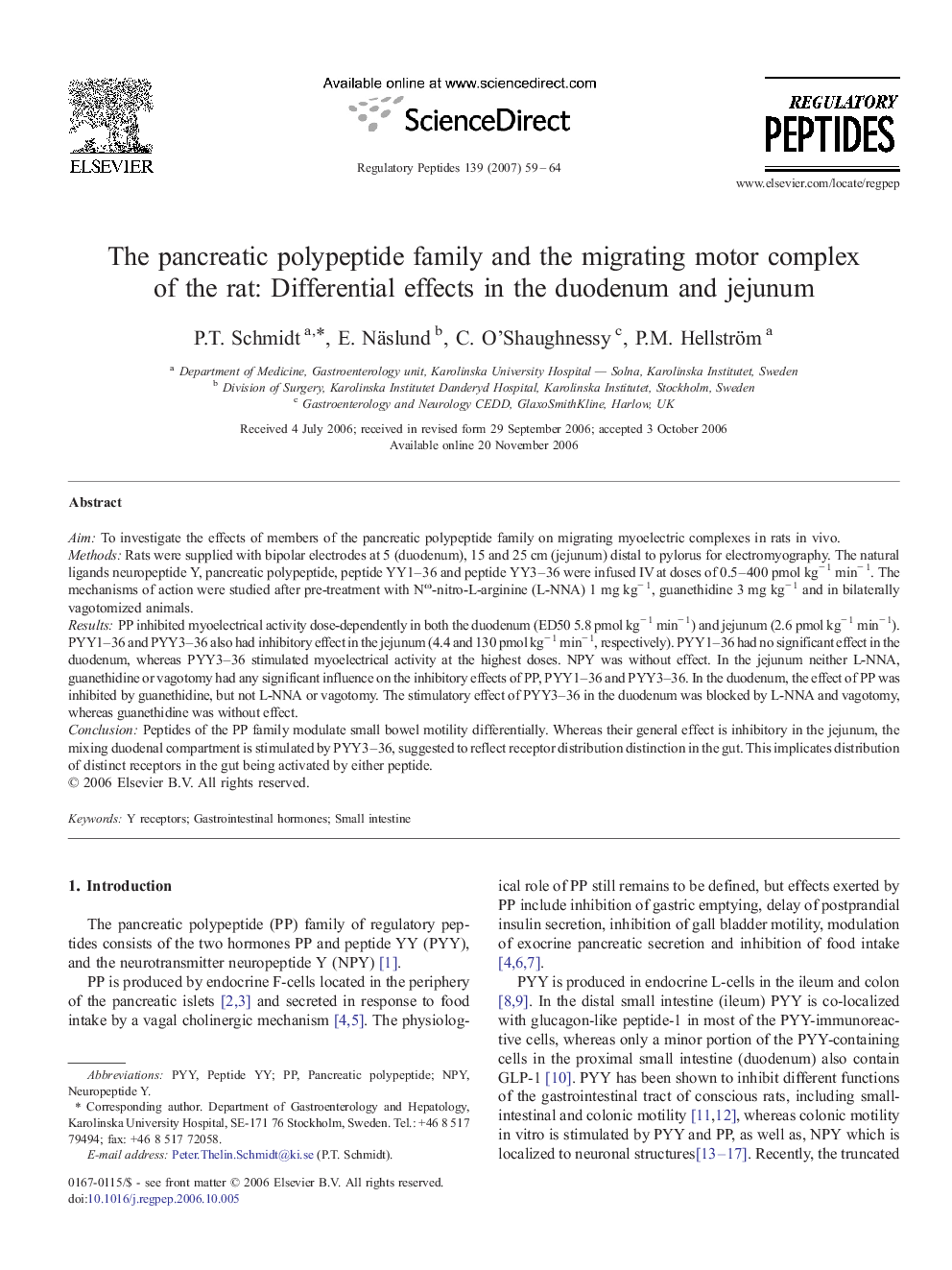| Article ID | Journal | Published Year | Pages | File Type |
|---|---|---|---|---|
| 2023440 | Regulatory Peptides | 2007 | 6 Pages |
AimTo investigate the effects of members of the pancreatic polypeptide family on migrating myoelectric complexes in rats in vivo.MethodsRats were supplied with bipolar electrodes at 5 (duodenum), 15 and 25 cm (jejunum) distal to pylorus for electromyography. The natural ligands neuropeptide Y, pancreatic polypeptide, peptide YY1–36 and peptide YY3–36 were infused IV at doses of 0.5–400 pmol kg− 1 min− 1. The mechanisms of action were studied after pre-treatment with Nω-nitro-L-arginine (L-NNA) 1 mg kg− 1, guanethidine 3 mg kg− 1 and in bilaterally vagotomized animals.ResultsPP inhibited myoelectrical activity dose-dependently in both the duodenum (ED50 5.8 pmol kg− 1 min− 1) and jejunum (2.6 pmol kg− 1 min− 1). PYY1–36 and PYY3–36 also had inhibitory effect in the jejunum (4.4 and 130 pmol kg− 1 min− 1, respectively). PYY1–36 had no significant effect in the duodenum, whereas PYY3–36 stimulated myoelectrical activity at the highest doses. NPY was without effect. In the jejunum neither L-NNA, guanethidine or vagotomy had any significant influence on the inhibitory effects of PP, PYY1–36 and PYY3–36. In the duodenum, the effect of PP was inhibited by guanethidine, but not L-NNA or vagotomy. The stimulatory effect of PYY3–36 in the duodenum was blocked by L-NNA and vagotomy, whereas guanethidine was without effect.ConclusionPeptides of the PP family modulate small bowel motility differentially. Whereas their general effect is inhibitory in the jejunum, the mixing duodenal compartment is stimulated by PYY3–36, suggested to reflect receptor distribution distinction in the gut. This implicates distribution of distinct receptors in the gut being activated by either peptide.
